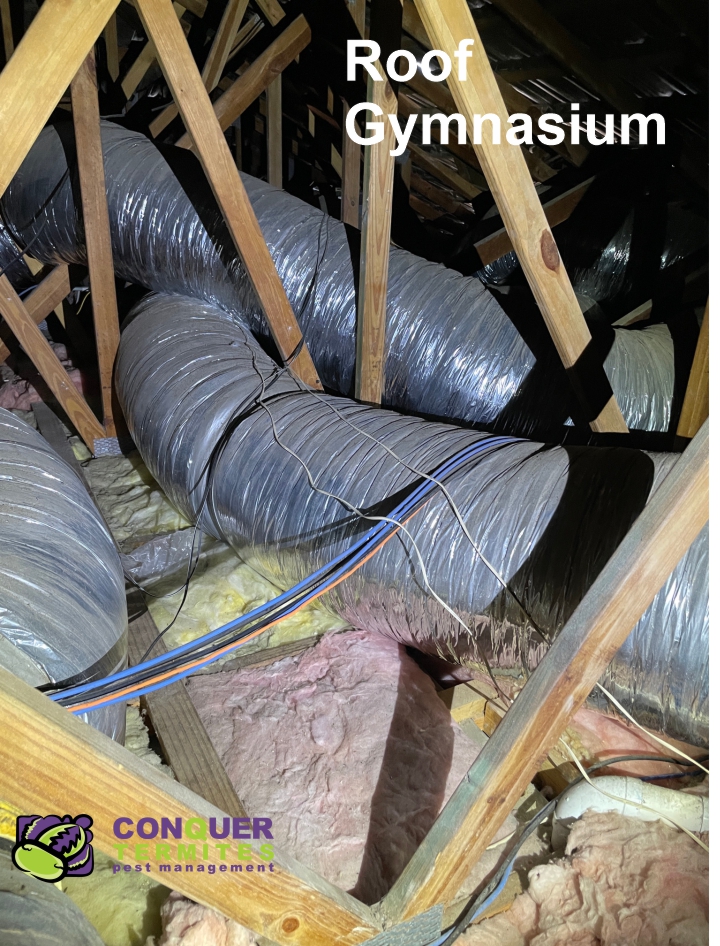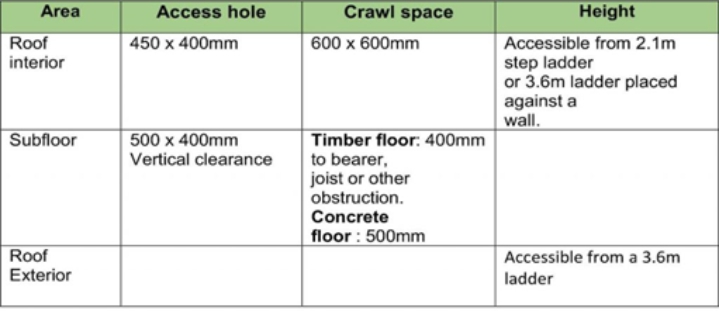Should an inspector go up into the roof for a termite inspection?
The roof void is a ‘must-see’ area that should be inspected when conducting a termite inspection. It is the area with the most exposed timber framing.
Accessing the roof is a big point of difference between a good inspector and a lazy inspector. It takes a bit of effort to access the roof void through the access point (manhole) and then to navigate the timber trusses. Most roof voids are low and have a tangle of timbers to crawl through. Add to the excessive heat, insulation and air-conditioning ducts; a roof is not a fun place to enter.

Why go up into a roof void for a termite inspection?
It is specified in the Australian Standards 3660.2.2007 & 4349.0.2010 for Regular Visual Inspection that “All timbers in accessible areas shall be inspected - roof framing”.
What are we looking for up in the roof?
- Termite nests
- Damaged timbers
- Moisture or leak issues
It is reported that 80% of termite infestations happen in and around bathrooms, especially showers. So it is important to inspect the top-plate of the bathroom walls to check for termite mudding or damaged timbers.
Not all roof voids are accessible
Not all roofs are accessible to conduct a visual inspection. Some access points are too small or too high. Sometimes there are personal furniture items under the manhole that doesn’t allow the inspector to erect his ladder safely.

There are access guidelines in the Australian Standards that need to be followed:
- The access point (manhole) should be no smaller than 450 x 400 mm.
- The height from the floor to the access point should be no higher than 2.1 m
- The crawl space between trusses and timber frame should be larger than 600 x 600 mm.

Also, there can be hazards that could prevent entering the roof void:
- Too hot at the time of the inspection - Above 35 C - Worksafe Queensland
- Stored personal items up in the roof - customer needs to remove
- Foil sheet insulation - need to turn the power off
- Exposed electrical wiring - need to turn the power off
- Asbestos dust - need to wear appropriate PPE
- Wildlife: snakes, possums, rodents and bees
Proper termite inspection includes the roof void
A proper termite inspection includes accessing the roof void to do a visual check.
If the technician is telling you he can’t enter the roof void, it might be one of the above valid reasons. If they are just saying it’s not part of their inspection, then they are not doing it to the Australian Standards and most importantly, they might be missing evidence of termites in your home.




